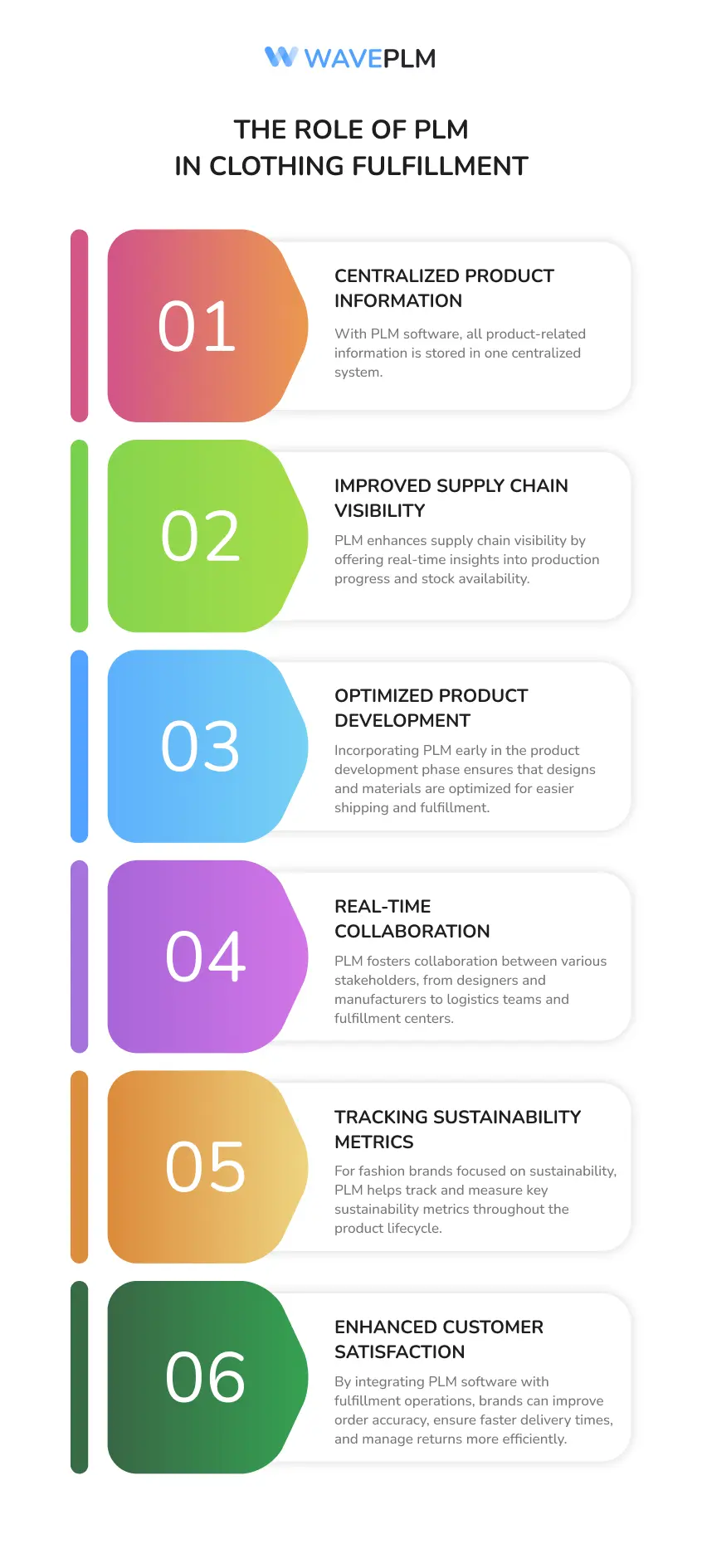
For any fashion brand, managing clothing fulfillment services is crucial. As the demand for faster deliveries and streamlined order processes grows, brands must adapt to changing logistics needs. Understanding clothing fulfillment is key to meeting customer expectations, maintaining brand reputation, and staying competitive in the ever-evolving fashion market.
In this article, we will explore the essentials of clothing fulfillment services, the logistics behind order fulfillment, and how fashion brands can optimize their shipping and garment fulfillment strategies.
What Are Clothing Fulfillment Services?
Clothing fulfillment services handle the entire logistics process of getting garments from your production line to your customers. It includes storing inventory, picking and packing orders, managing shipping, and handling returns. These services ensure that when customers place an order, the products are quickly and efficiently delivered to their doorsteps.
For fashion brands, this involves managing complex tasks like tracking inventory, monitoring stock levels, and ensuring the timely shipment of orders. Effective fulfillment services help brands maintain smooth operations and provide a seamless shopping experience.
The Order Fulfillment Process
Order fulfillment is the backbone of any e-commerce business, and for fashion brands, it’s even more critical due to the fast-paced nature of the industry. The order fulfillment process typically involves these key steps:
- Receiving Inventory: Products arrive at the fulfillment center, where they are sorted and stored in an organized manner. Accurate inventory tracking at this stage ensures you always know how much stock you have available.
- Inventory Storage: Clothing items are stored in designated sections or bins. Proper storage prevents product damage and allows quick access when fulfilling orders.
- Order Picking: When a customer places an order, the items are picked from the inventory. An efficient system here is crucial to avoid mistakes, such as picking the wrong size or color.
- Packing Orders: After the items are picked, they are packed securely for shipping. Packaging should be both practical and reflective of your brand’s identity. Many fashion brands choose eco-friendly or branded packaging to enhance the customer experience.
- Shipping: The packed orders are shipped to the customer’s location. Timely shipping with real-time tracking options builds customer trust and satisfaction.
- Handling Returns: In fashion, returns are common due to fit or style preferences. A smooth returns process, including quick refunds or exchanges, can set your brand apart.
Why Clothing Fulfillment Services Matter
Apparel fulfillment services help streamline logistics, reduce errors, and improve customer satisfaction. Whether you operate a small fashion boutique or a large brand, fulfillment services make it easier to scale your operations without sacrificing quality. Here’s why they are essential:
- Time-Saving: Outsourcing fulfillment allows you to focus on core aspects of your business like design, marketing, and customer service.
- Cost Efficiency: By partnering with fulfillment services, you can reduce overhead costs related to storage, packing, and shipping.
- Scalability: Whether you’re managing seasonal spikes or expanding into new markets, fulfillment services help you scale up or down as needed.
Choosing the Right Clothing Fulfillment Partner
Selecting the right apparel fulfillment services can significantly impact your brand’s success. Here are some factors to consider:
1. Location of Fulfillment Centers
A fulfillment partner with centers close to your customers can reduce shipping times and costs. For instance, if your primary market is in the U.S., working with a fulfillment center based there will result in faster deliveries compared to international centers.
2. Technology and Integration
Choose a provider that offers advanced technology and integrates easily with your e-commerce platform. Real-time inventory tracking, automated order processing, and integrated shipping options streamline the fulfillment process, giving you more control over your supply chain.
3. Customization Options
Customization is important, especially in fashion. Your fulfillment partner should offer branded packaging, custom inserts, or personalized messaging to enhance your customer’s unboxing experience. This can help solidify your brand identity.
4. Return Management
Returns are inevitable in fashion. Make sure your fulfillment partner has an efficient returns process in place. A smooth return experience leads to happier customers and can improve your brand loyalty.
Apparel Fulfillment and Sustainability
Fashion brands are under increasing pressure to adopt sustainable practices, including in their fulfillment operations. Many brands are now opting for eco-friendly packaging, carbon-neutral shipping, and ethical warehousing solutions. By choosing a fulfillment partner that shares your sustainability goals, you can reduce your environmental footprint and appeal to eco-conscious consumers.
When evaluating apparel fulfillment services, look for providers that offer:
- Eco-friendly packaging options: Biodegradable or reusable materials help reduce waste.
- Carbon-neutral shipping: Some fulfillment companies offer shipping options that offset carbon emissions.
- Energy-efficient warehousing: Warehouses that use renewable energy or have efficient resource management can align with your sustainability goals.
Common Challenges in Clothing Fulfillment
While outsourcing fulfillment services can streamline logistics, there are challenges that fashion brands must be aware of. These include:
1. Inventory Management
Maintaining optimal stock levels can be tricky, especially with fashion items that have seasonal demand or trend-based fluctuations. Overstocking ties up capital, while understocking can lead to missed sales opportunities.
2. Shipping Costs
Shipping apparel can be expensive, particularly for international orders or expedited shipping. Brands must carefully consider how to balance shipping speed with cost-efficiency.
3. Returns Handling
Managing returns effectively is a common pain point. Without a well-managed returns process, you risk damaging customer relationships.

The Role of PLM in Clothing Fulfillment
Product Lifecycle Management (PLM) software plays a crucial role in streamlining clothing fulfillment services. PLM software enables fashion brands to manage the entire lifecycle of a product, from design and development to production and shipping of clothing. It enhances coordination across different teams and departments, ensuring that everything runs smoothly and efficiently during fulfillment.
Here are some key ways PLM tools contribute to clothing fulfillment services in fashion industry:
1. Centralized Product Information
With PLM software, all product-related information is stored in one centralized system. This includes product designs, materials, production schedules, and shipping details. A well-integrated PLM solution ensures that teams working on design, production, and fulfillment all have access to the same data, minimizing errors and improving communication. This is particularly valuable in fulfillment as it helps avoid mix-ups, such as sending out the wrong product versions or sizes.
2. Improved Supply Chain Visibility
PLM systems enhances supply chain visibility by offering real-time insights into production progress and stock availability. With clear oversight of where each product is in the lifecycle, brands can better plan their inventory management and fulfillment operations. This visibility ensures that the right products are available in the right quantities at the right time, reducing delays and stockouts.
3. Optimized Product Development for Fulfillment
Incorporating PLM software early in the product development phase can ensure that designs and materials are optimized for easier shipping and fulfillment. For example, lightweight or compact packaging solutions can be integrated into the design process, reducing shipping costs and environmental impact. PLM systems helps fashion brands ensure that all aspects of a product, from its materials to its packaging, align with efficient fulfillment goals.
4. Real-Time Collaboration
PLM fosters collaboration between various stakeholders, from designers and manufacturers to logistics teams and fulfillment centers. With real-time updates and shared data, PLM helps streamline processes, ensuring that everyone involved in the product lifecycle is on the same page. This leads to faster decision-making, fewer production delays, and improved efficiency in clothing fulfillment.
5. Tracking Sustainability Metrics
For fashion brands focused on sustainability, apparel PLM helps track and measure key sustainability metrics throughout the product lifecycle. It allows brands to monitor eco-friendly material choices, sustainable production methods, and carbon-neutral shipping options. This data can be used to inform decisions that reduce environmental impact, aligning fulfillment practices with the brand’s sustainability goals.
6. Enhanced Customer Satisfaction
By integrating PLM software with fulfillment operations, brands can improve order accuracy, ensure faster delivery times, and manage returns more efficiently. Customers benefit from a smoother fashion brand logistics, more reliable shopping experience, and brands can strengthen customer loyalty by consistently meeting expectations.
PLM Software and Apparel Fulfillment Integration
Integrating PLM software with your fulfillment platform creates a seamless workflow between product development and fulfillment. This integration ensures that any changes to product specifications, inventory levels, or packaging details are automatically updated in the fulfillment system. As a result, brands can reduce the risk of shipping errors, manage inventory, improve order accuracy, and maintain efficient logistics operations.
For example, if a product design is updated or if there is a change in the materials used, the PLM system immediately updates this information for the fulfillment team. This helps avoid scenarios where outdated or incorrect versions of products are sent out to customers, reducing returns and improving overall customer satisfaction.
By using apparel PLM, fashion brands can ensure that their fulfillment services are closely aligned with their overall product development and supply chain strategies. This leads to better coordination, faster time to market, and enhanced brand performance.
Conclusion
Incorporating PLM software into your clothing fulfillment strategy can greatly enhance efficiency and accuracy. By managing product data in a centralized system, improving collaboration, and optimizing the product lifecycle for fulfillment, fashion brands can streamline logistics operations, save time and meet the fast-paced demands of the market. Whether you’re scaling your brand or aiming to reduce errors in shipping, the integration of PLM with fulfillment services can offer a competitive edge.
Embracing PLM technology allows fashion brands to not only improve their internal processes but also deliver a better experience to customers, from design all the way to doorstep delivery.





Leave a Reply